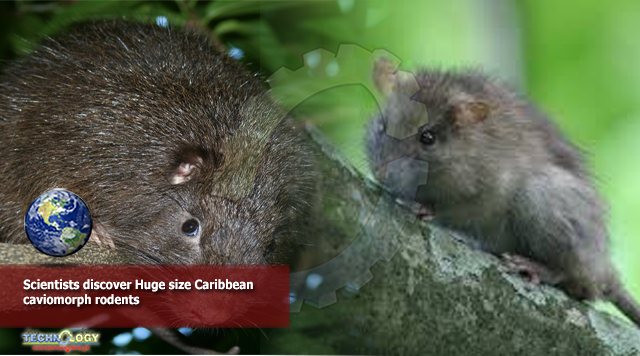A new study by scientists from the Natural History Museum and the Zoological Society of London (ZSL) has found that the incredibly diverse Caribbean caviomorph rodents, which range in size from 0.1kg-200kg, evolved into radically different species across the islands of the western Caribbean following a single colonisation event

The research used ancient DNA techniques to obtain the first genetic data from several extinct species, including the completely extinct Caribbean
Mammals rarely colonise islands, but rodents did make it to the Caribbean, so this archipelago is a perfect place to study colonisation events and island evolution. Our ancient DNA analyses produced the first molecular data for several extinct Caribbean caviomorph rodents species, allowing us to uncover when and how they arrived in the Caribbean.’and “giant hutias”, to reconstruct the origins and evolutionary history of this enigmatic group.
Caviomorphs include living South American rodents such as guinea pigs, chinchillas and capybaras. There used to be over 30 species of Caribbean caviomorphs, the largest of which were the size of bears.
However, nearly all of these species are now extinct due to human activities – hunting, habitat loss, and the introduction of invasive species to Caribbean islands.
This study is the first to compare genetic data from across this largely extinct group of rodents – using data from living Caribbean rodents called hutias, together with data from five extinct Caribbean species ranging from mouse-sized to dog-sized animals – to resolve their evolutionary history and biogeographic origins.
Understanding the mechanisms behind how these animals diversified across the Caribbean provides unique new insights into how species adapt and react to new environments.
The Caribbean represents an important system to study evolutionary patterns and processes. Dr Roseina Woods, who worked on this study as part of her PhD at the Natural History Museum, said: ‘Islands are brilliant for studying evolution for several reasons. They are often remote, meaning that only a few select groups of organisms reach islands in the first place.
Mammals rarely colonise islands, but rodents did make it to the Caribbean, so this archipelago is a perfect place to study colonisation events and island evolution. Our ancient DNA analyses produced the first molecular data for several extinct Caribbean caviomorph rodents species, allowing us to uncover when and how they arrived in the Caribbean.’
Despite their wide range of ecological niches and diverse morphologies, all of these rodents evolved from a single overwater colonisation event around 18 million years ago.
These findings provide an important new example of adaptive radiation, where a single colonising mainland lineage evolves into novel forms across a group of islands. This evolutionary event represents the greatest increase in body size ever recorded in rodents, and possibly the greatest for any mammal lineage.
Co-author Dr Selina Brace from the Natural History Museum said:‘It’s amazing to think that a single colonisation led to such extreme rodent gigantism. These mighty rodents became more than thirty times larger than their mainland relatives.’
Co-author Professor Ian Barnes from the Natural History Museum noted: ‘The Caribbean is a fascinating region to study, but its hot, wet environment quickly degrades DNA, making it very difficult to obtain data from ancient bones.
Combined with the very rapid changes in shape and size that animals often undergo when they colonise islands, it’s often difficult to reconstruct the evolutionary relationships of extinct species from the region.’
Most of the Caribbean’s surviving rodent species are highly threatened with extinction. Co-author Professor Samuel Turvey from the Zoological Society of London said: ‘The last few survivors of the Caribbean rodent radiation – the hutias of Cuba, Hispaniola, Jamaica, and the Bahamas – are global priorities for conservation.
Their incredible evolutionary history means that we cannot allow these neglected species to become extinct – we need urgent conservation action to protect what’s left of this remarkable group of mammals.’
Originally published at Natural history museum